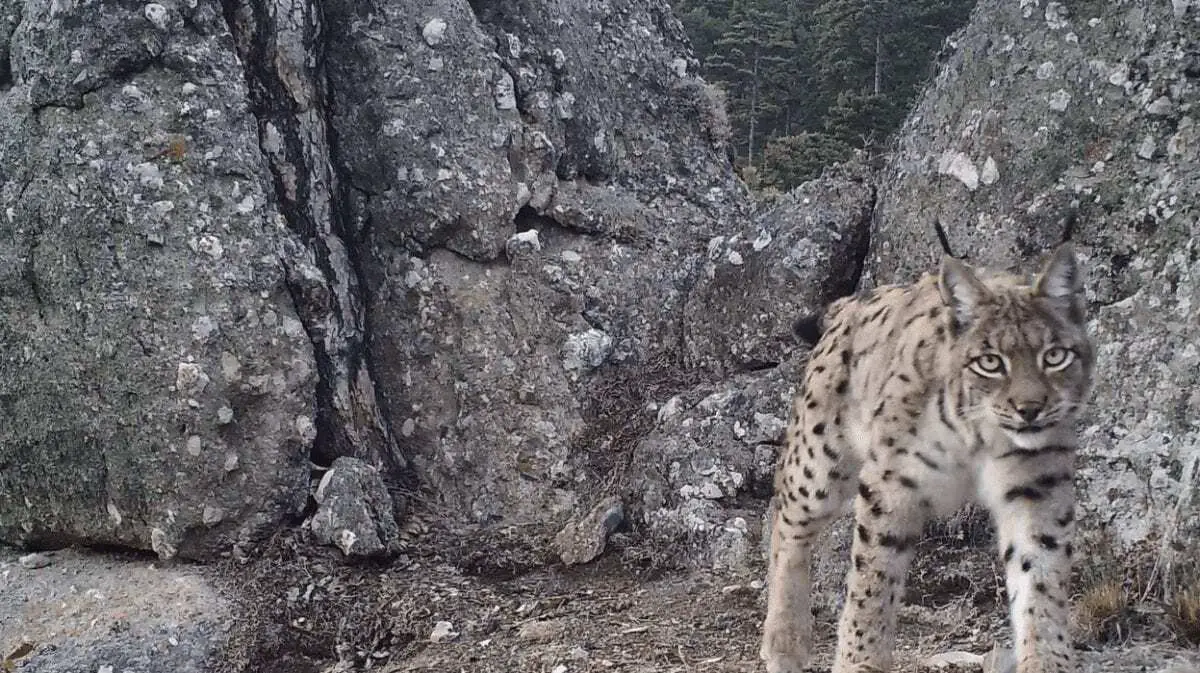Little is known about the biology and the genetic status of the Caucasian Lynx (Lynx lynx dinniki), a subspecies of the Eurasian lynx distributed across portions of Turkey, the Caucasus region and Iran.
To collect baseline genetic, ecological, and behavioural data and assist future conservation efforts, a team of scientists from the Leibniz Institute for Zoo and Wildlife Research (Leibniz-IZW) collected data and samples in a region of Anatolian Turkey over several years. They were particularly interested in the question whether non-invasive samples (faeces, hair) were helpful to discern genetic diversity of the study population. The results of the genetic analyses indicated an unexpectedly high genetic diversity and lack of inbreeding despite the recent isolation of the study population, a result that would not have been obtained with the use of conventional samples. The data also revealed that females stay near home ranges in which they were born whereas males disperse after separation from their mothers. These insights into the genetics and behaviour of the Caucasian Lynx are published in the scientific journal PLoS ONE.
Among lynx species, the Eurasian Lynx has the widest geographical distribution. Previous research has largely focused on European populations, with the result that there is little known about the subspecies in Asia, such as the Caucasian and Himalayan subspecies. “Scientists still know surprisingly little about their ecological requirements, spatial structure and genetic diversity”, says Leibniz-IZW researcher Deniz Mengüllüoğlu (Department for Evolutionary Ecology). “Our study aimed at collecting baseline genetic, ecological and behavioural data of the lynx population in a mountainous region in north-west Anatolia”. Making use of box trapping and non-invasive faecal sampling allowed Mengüllüoğlu to extract DNA and conduct genetic analyses on a population scale. The lynx population had also been monitored via camera traps at 54 different stations for nearly a decade.
Looking into family relationships of individual lynx, the data revealed that females stay near the territories in which they were born whereas males disperse after separation from their mothers. Such behaviour is known from many mammals, most likely to avoid inbreeding. “We can conclude from our analyses that territoriality in lynx and philopatry in female lynx can result in low genetic diversity estimates if sampling is done in small study areas via box trapping alone”, says Mengüllüoğlu. This behaviour – females remaining in close proximity to their mothers’ territory – is called female philopatry, and Mengüllüoğlu and his team confirmed it for this subspecies. “Using faecal samples that were non-invasively collected, we were able to sample more non-territorial individuals, gaining information about an additional component of this lynx population.” Unless individuals become used to the presence of box traps within their own range (habituation), and thus are ready to enter them, sampling them by conventional means is unlikely. Hence habituation will bias conventional sample collection in favour of resident territorial individuals and their kittens.
A second important finding is that genetic diversity is unexpectedly high in this population. Lynx in north-west Anatolia are isolated from southern and north-eastern populations by a series of natural and human constructed barriers. “Population isolation can be harmful and, for example, lead to a loss of genetic variation. But it appears that genetic diversity is in fact substantial at the moment and matches the diversity found in European endogenous populations”, states senior author Daniel Förster from the Leibniz-IZW, Department of Evolutionary Genetics. “Management should therefore focus on maintaining the current level of diversity”. As a first step, Mengüllüoğlu and Förster recommend identification and conservation of primary lynx habitats and corridors in the region.
“We also need to address threats that can lead to future loss of genetic variation” adds Mengüllüoğlu. Since this study has set a baseline for comparison with future findings, similar work is needed for the other two Turkish populations in order to determine whether the three big populations are currently connected by gene flow at all, Mengüllüoğlu and Förster say. Mengüllüoğlu is currently working on a long-term lynx monitoring project and the development of a “Turkish Lynx Conservation Action Plan” in collaboration with the Wildlife Department of Turkey.
Forschungsverbund Berlin e.V. (FVB)
Header Image – Caucasian Lynx (Lynx lynx dinniki). Photo: Deniz Mengüllüoğlu, Nurten Salikara





